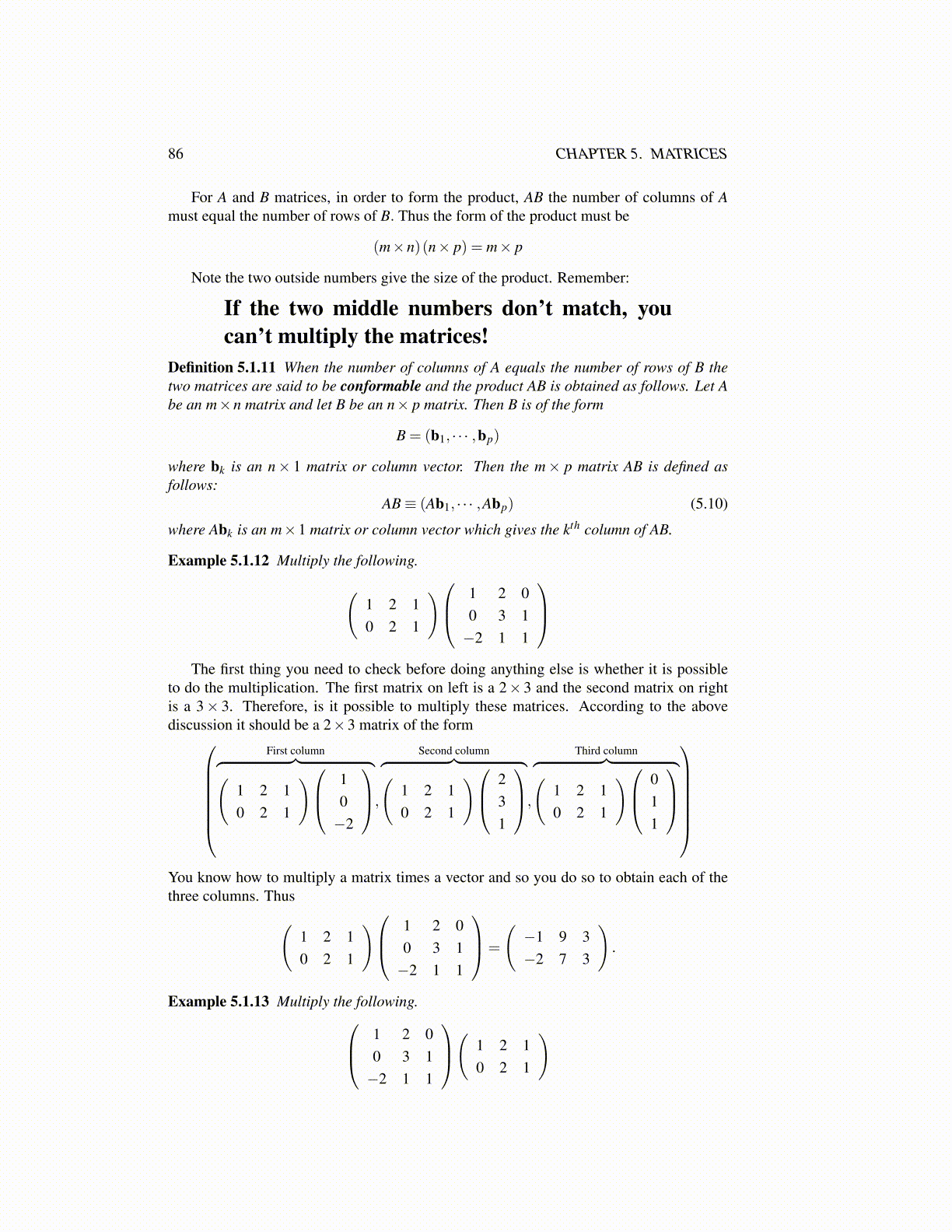
86 CHAPTER 5. MATRICES
For A and B matrices, in order to form the product, AB the number of columns of Amust equal the number of rows of B. Thus the form of the product must be
(m×n)(n× p) = m× p
Note the two outside numbers give the size of the product. Remember:
If the two middle numbers don’t match, youcan’t multiply the matrices!
Definition 5.1.11 When the number of columns of A equals the number of rows of B thetwo matrices are said to be conformable and the product AB is obtained as follows. Let Abe an m×n matrix and let B be an n× p matrix. Then B is of the form
B = (b1, · · · ,bp)
where bk is an n× 1 matrix or column vector. Then the m× p matrix AB is defined asfollows:
AB≡ (Ab1, · · · ,Abp) (5.10)
where Abk is an m×1 matrix or column vector which gives the kth column of AB.
Example 5.1.12 Multiply the following.(1 2 10 2 1
) 1 2 00 3 1−2 1 1
The first thing you need to check before doing anything else is whether it is possible
to do the multiplication. The first matrix on left is a 2× 3 and the second matrix on rightis a 3× 3. Therefore, is it possible to multiply these matrices. According to the abovediscussion it should be a 2×3 matrix of the form
First column︷ ︸︸ ︷(1 2 10 2 1
) 10−2
,
Second column︷ ︸︸ ︷(1 2 10 2 1
) 231
,
Third column︷ ︸︸ ︷(1 2 10 2 1
) 011
You know how to multiply a matrix times a vector and so you do so to obtain each of thethree columns. Thus(
1 2 10 2 1
) 1 2 00 3 1−2 1 1
=
(−1 9 3−2 7 3
).
Example 5.1.13 Multiply the following. 1 2 00 3 1−2 1 1
( 1 2 10 2 1
)